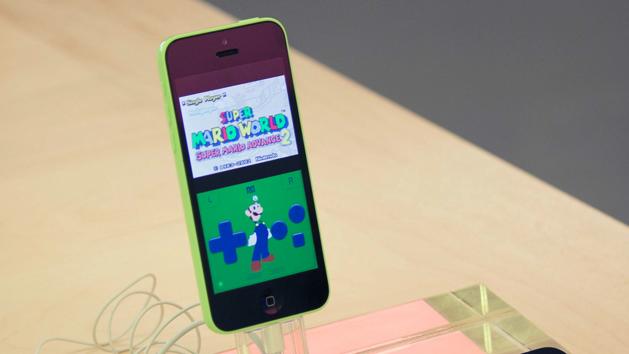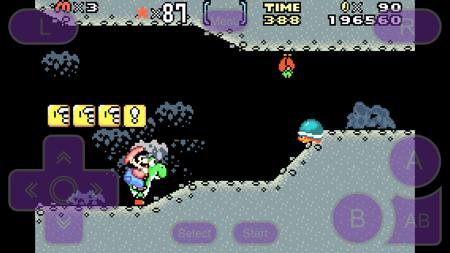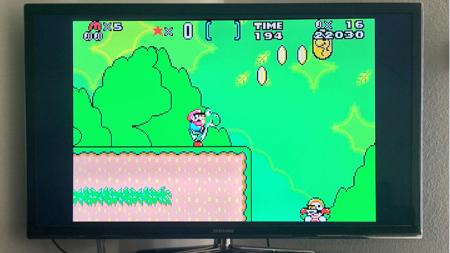gba4ios
Latest

The next iOS update will likely block your favorite game emulator
If you're using iOS, you'd better not get too attached to your favorite unofficial game emulator -- there's a real chance that you won't have an easy way to load it before long. The GBA4iOS team has noticed that the iOS 8.1 beta fixes a loophole that lets you install third-party emulators and other unapproved apps simply by rolling back the date on your device. This won't prevent you from installing emulators if you're willing to jailbreak, but you'll have to give up the luxuries afforded by official support (such as timely OS updates) if you want to relive your gaming glory days on an iPhone.

[Updated] iOS 8.1 kills exploit that allowed installation of game emulators
[Update]: Riley Testut has published a new post on his personal blog adding some additional detail to this saga. It's definitely worth a read. Everyone loves retro game emulators on iOS -- well, almost everyone -- but the ability to easily install them looks like it's about to meet an end thanks to Apple's upcoming iOS 8.1 update. According to those who have tested the soon-to-be-released software, the update blocks an often-used exploit that many emulators use to allow installation on non-jailbroken devices. The trick involves changing the date within the iOS settings prior to installing the emulator apps in question. Riley Testut, a longtime iOS emulator aficionado and one of the creators of the beloved GBA4iOS app, offers a succinct summary of how the exploit works. "If the device's date was off by a certain amount (approximately 75 minutes in our testing), iOS would fail to perform a security check on the launched app," Testut explains. "Rather than defaulting to preventing the app from opening (as we would assume), it instead defaulted to allowing the app to open, possibly as a fallback to prevent a normal user's officially obtained apps from not opening under certain conditions." In short, it was Apple's own failsafe that allowed the unofficial apps to be used in the first place. Now that the hole has been plugged, and the apps will no longer open simply by default, it could spell an early end for the iOS emulator scene on non-jailbroken devices. There is, of course, always the possibility that Apple will reverse the change, though as Testut himself admitted to me, the chances of that happening are quite slim. So where do we go from here? Emulators will of course continue to thrive on jailbroken iPhones and iPads, and anyone who doesn't update to iOS 8.1 will still be able to utilize the date exploit to install apps like GBA4iOS. Unfortunately, with Apple adding hotly anticipated features like Apple Pay in impending updates, refusing to install new iOS versions is tough stand to make. As for GBA4iOS specifically, development will push on. Testut promises that version 2.1 is still on its way and notes that the open source nature of the app and others like it will allow anyone dedicated enough to compile it themselves will still be able to install it manually on their own devices. So for now, don't call the iOS emulation scene dead, but it might be on life support.

The TUAW Daily Update Podcast for May 14, 2014
It's the TUAW Daily Update, your source for Apple news in a convenient audio format. You'll get some the top Apple stories of the day in three to five minutes for a quick review of what's happening in the Apple world. You can listen to today's Apple stories by clicking the player at the top of the page. The Daily Update has been moved to a new podcast host in the past few days. Current listeners should delete the old podcast subscription and subscribe to the new feed in the iTunes Store here.

Nintendo nails GBA4iOS with takedown notice
GBA4iOS, the massively popular GameBoy Advance emulator for iPhone and iPad, has been taken offline due to a DMCA request demanding that the hosting site be taken offline. At the moment, the app is no longer available for download from the official site and there's no word on whether it will ever live again. This isn't exactly surprising, given the app's ability to replicate functionality of Nintendo's hardware. For emulation fans, this type of thing isn't new, but it's still a bummer to see such a quality app meet an untimely fate. NDS4iOS, a Nintendo DS emulator with similar functionality, remains available at the time of this writing, though that might not be the case for much longer. Nintendo recently mentioned its intention to explore launching its own apps for "smart devices," so weeding out the emulation crowd may be the first step towards that end.

How to turn your iPhone or iPad into a retro game console without jailbreaking
The iPhone and iPad are already super-capable gaming devices, with thousands of quality titles spanning all genres and tastes, but sometimes it's nice to take a trip back to yesteryear... and sometimes you want to see those games on the big, beautiful HDTV screen in your living room. Here's how to do it. What you'll need A capable iOS device - Anything starting with the iPhone 4s should do fine. With older hardware you risk some serious performance issues with certain games and won't be able to use AirPlay. An A/V adapter w/HDMI or Apple TV - The cheaper route here is to use the official Apple A/V adapter (either for Lightning or the older 30-pin connector), but using AirPlay along with an Apple TV allows you to go cordless and, depending on the emulation software you choose, AirPlay may provide a more responsive, lag-free experience. Emulation software - We'll go over the options here in a little bit. An MFi game controller (optional) - If you prefer real buttons, several emulators allow you to use these accessories for a more tactile experience. The Software Once reserved for gamers willing to jailbreak their devices, game emulators can now be downloaded straight from the web. You'll almost always have to to some trickery with your device's date and time settings in order to get the apps to install correctly, but it's not too much trouble. GBA4iOS - A Game Boy Color and Game Boy Advance emulator, GBA4iOS version 2.0, was recently released to much acclaim. It supports MFi game controllers as well as built-in AirPlay functionality that puts the game on the big screen while you use your iPhone or iPad as the game controller. Game downloads can be handled from within the app, with no file management required. NDS4iOS - This Nintendo DS emulator features the same AirPlay and controller support as GBA4iOS, with the added bonus of splitting the DS's twin screen between your TV and iDevice, the latter acting as the console's bottom touch screen. Similarly, game downloads require no file management. MD.emu - A fully featured Sega Genesis / Mega Drive emulator, MD.emu (find on this list) is a bit more demanding in that it doesn't allow you to simply download game ROMs directly to the app itself. Instead, the app lets you browse your iOS file system in search of the games, which you'll have to download and place in the app's "Documents" folder via iTunes and then sync your device. There's a persistent bug with how the gamepad overlay appears on screen, but it's still playable, and MD.emu does not support MFi controllers. SiOS - Like MD.emu, SiOS (find on this list) isn't quite as streamlined as the "4iOS" emulators, but it's still entirely capable of offering a great Super Nintendo (SNES) gaming experience. It includes frameskip support, saves, and a few other nice features, but the most important thing is that the emulation is nearly flawless. You'll need to use iTunes to add ROMs to the app. Does not support MFi controllers. Setting up Once you decide whether you want to go the wired or wireless route, getting things set up is fairly straightforward. If you decided to go with the A/V adapter and HDMI cord, simply plug your iPhone or iPad into the adapter and then connect it to your TV via HDMI. Start up your emulation software, load a game, and enjoy the action on the big screen. AirPlay through the Apple TV is even simpler, letting your wirelessly toss your iDevice screen onto your HDTV. Regardless of which method you choose, be sure to put your HDTV into "Game Mode" or something similar, to cut down on lag between button presses and on-screen action. Adding a controller If you have an MFi controller handy -- like the SteelSeries Stratus, MOGA Ace Power, or Logitech PowerShell -- you have the added option of tactile control with a couple of the emulators available. There are tradeoffs to using each one, however, so keep these in mind: SteelSeries Stratus - The only wireless controller, the Stratus is perfect for kicking back on the couch, but it also introduces a tiny bit of lag that makes fast-moving games hard to play. Platformers and racing games are rough with the Stratus, but RPGs and other, less twitchy games are ideal. The Stratus is also the only MFi controller you can use without having an Apple TV. MOGA Ace Power & Logitech PowerShell - Both of these require the iPhone, so iPad gamers are left out, but on-screen button response is nearly perfect when compared to the wireless Stratus. However, because both of these controllers cover the Lightning port on your iPhone, you'll need to use the AirPlay option instead of the wired A/V adapter. Note: The use of emulators to play game ROMs is a topic that has sparked many an argument, and that's not likely to change any time soon. Some feel that emulating software you already own -- or dumping your own ROMs from your own copy of the original game -- adds some grey area to the issue, but as the ESA notes, using ROMs will almost always run afoul of user licensing agreements. Read up on the effects and potential consequences of game emulation and proceed at your own risk.

How a Game Boy emulator app snuck past Apple restrictions
Due to the legal and ethical concerns regarding retro game emulators, they never make their way to Apple's official App Store, but as ReadWrite reports, iPhone and iPad users can - at least for the moment - download a fully functional Game Boy Advance emulator app without the need for a jailbreak. And perhaps the most interesting thing about it is that Apple's own Developer Enterprise Program has laid the groundwork for such an app to be distributed not via the App Store, but simply by clicking a link in a mobile web browser. The app is called GBA4iOS and its creator, Riley Testut, is using a company called MacBuildServer to distribute it. MacBuildServer is a service that developers use to aid in app development and distribution, and the company also happens to be a part of Apple's iOS Developer Enterprise Program. Using MacBuildServer's enterprise certificate - which the company provides to clients simply as a way to test how the service works - Testut put the app up for download without any requirements on the user end at all. It should also be noted that no actual game code is being distributed along with the app, so those who take the time to download it will still need to find a way to provide their own game roms. Of course, Testut's current setup seems as though it could implode from a number of different angles, but nobody - including Apple, MacBuildServer, or even Nintendo - has made a move to squash it.


